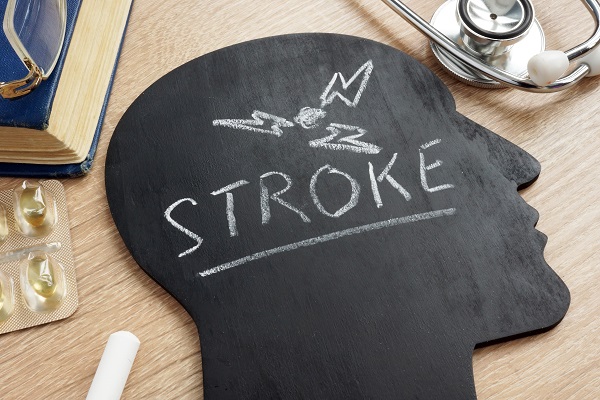
A STROKE is a medical emergency, often called a “brain attack”. It can happen to anyone at any age. It occurs when a blood vessel carrying oxygen and nutrients to the brain either becomes blocked by a clot – ischemic stroke – or bursts and causes bleeding in the brain – hemorrhagic stroke. In a stroke, a sudden interruption of blood flow to the brain leads to brain cell damage and potentially life-threatening consequences, often leading to disability even death.
Common risk factors for stroke include high blood pressure, high cholesterol, smoking, diabetes, obesity, and a sedentary lifestyle. This, adopting a healthy lifestyle that includes regular exercise, a balanced diet, managing blood pressure and avoiding smoking and excessive alcohol consumption can significantly reduce the risk of stroke.
When a stroke does happen, detecting it early is crucial for timely treatment and better outcomes. Here are some important signs and simple ways to help you recognise when someone might be having a stroke:
Remember the acronym “BE FAST” to identify stroke symptoms quickly:
- B: Balance – Is the person suddenly having trouble with balance or coordination?
- E: Eyes – Are they experiencing sudden vision problems, like blurred or double vision?
- F: Face – Ask them to smile. Does one side of their face droop?
- A: Arms – Request them to raise both arms. Does one arm drift downward or feel weak?
- S: Speech – Is their speech slurred or difficult to understand?
- T: Time – If you observe any of these symptoms, it’s time to call emergency services immediately.
In addition, some patients might present with confusion or disorientation, a sudden severe headache or dizziness. It’s important to note that stoke symptoms may vary from person to person and not all signs may be present in every case. Also, stroke symptoms can sometimes be subtle, making it easy to overlook them. When in doubt, always err on the side of caution and seek medical attention promptly.
Strokes can have severe impacts on person’s physical and cognitive abilities, making it crucial to raise awareness about advanced treatment options, such as mechanical thrombectomy, to improve outcomes for stroke patients.
Importance of Time Treatment
Time is of the essence when dealing with a stroke. Every second counts and seeking immediate medical attention is crucial. The longer the brain is deprived of blood flow, the greater the damage that can occur. The quicker medical attention is provided, the better the chances of minimising brain damage and reducing the risk of disability or death. Recognising the signs of a stroke and acting swiftly can significantly improve the chances of a positive outcome.
Introducing Medical Thrombectomy
Medical thrombectomy is a revolutionary procedure that has significantly transformed stroke care. It is particularly effective for ischemic strokes caused by large artery blockages, known as large vessel occlusions (LVO). This technique involves using specialised medical devices to remove the clot thereby restoring blood flow to the affected area of the brain.
During a mechanical thrombectomy, a catheter is carefully threaded through blood vessels from a small incision in the groin and wrist.
The catheter is guided by advanced imaging technology and directed to the clot site. Here, a few types of mechanical thrombectomy devices are commonly used depending on availability, proceduralist preference and cost. Two of the most common methods used currently are aspiration and stent retriever.
Aspiration Thrombectomy
Think of a straw with a vacuum-like power. In aspiration thrombectomy, a doctor uses a thin tube called an aspiration catheter to reach the blocked blood vessel in the brain. Once the catheter is in place, it creates a suction or a gentle pulling force. This suction helps the doctor to grab and remove the clot from the brain, just like sucking something up through a straw. As the clot is removed, the blood vessel gets cleared and blood flow returns to the affected part of the brain.
Stent Retriever Thrombectomy
Now, imagine a tiny metal mesh that looks like a tiny basket or cage. This metal mesh is called a stent retriever. During this type of mechanical thrombectomy, a doctor uses a thin tube called a catheter to guide the stent retriever through the blood vessels to the blocked area in the brain.
Once the stent retriever reaches the clot (the blockages), it’s carefully opened up like an umbrella, trapping the clot within its metal wires. The doctor then gently pulls the stent retriever back, along with the trapped clot, removing it from the blood vessel.
With the clot removed, blood flow is restored, and the brain can get the oxygen and nutrients it needs to recover. This procedure is particularly effective for larger or older clots that might not dissolve easily with medication. Both stent retriever and aspiration thrombectomy are minimally invasive procedures, meaning they don’t require major surgery. They are performed by specialised doctors called interventional radiologists.
Advantages of Medical Thrombectomy
Extended Treatment Window: One of the most remarkable advantages of mechanical thrombectomy is its extended treatment window. The typical window of opportunity for administering a clot busting medication called tPA (tissue plasminogen activator) is within the first 4.5 hours after stroke symptoms begin.
However, only a small percentage of stroke patients are eligible for tPA due to various factors. However, mechanical thrombectomy can be performed up to 24 hours after the initial signs of stroke. This expanded time frame allows more patients to benefit from the treatment.
Improved Outcomes: Swift treatment with this technique can remarkably improve outcomes, reducing the severity of disability and increasing the chances of a full recovery.
Studies have shown that mechanical thrombectomy significantly improves patient outcomes compared to standard medical therapy alone, especially in LVO lesions. Patients treated with mechanical thrombectomy experience higher rates of functional independence and reduced long-term disability.
Lower Mortality Rates: By swiftly restoring blood flow to the brain, mechanical thrombectomy has been associated with lower mortality rates, ensuring a higher chance of survival for stroke patients.
Promoting Awareness, Access
Despite the numerous benefits of mechanical thrombectomy, its full potential can only be realised if there is widespread awareness and access to this life-saving treatment. Public education campaigns about stroke symptoms and the importance of seeking immediate medical attention are essential.
Additionally, it is crucial for healthcare providers and hospitals to be equipped and trained to offer mechanical thrombectomy as part of their stroke treatment protocols. Stroke is a devastating condition that requires urgent and appropriate medical intervention. Mechanical thrombectomy has emerged as a game-changing treatment option for patients suffering from ischemic stroke caused by LVO, providing new hope for patients and their families.
By recognising stroke symptoms and seeking immediate medical attention – and by promoting awareness and access to comprehensive stroke centres – we can collectively work towards reducing the impact of strokes and saving lives. Remember, time lost is brain lost – act FAST!
This article was contributed by:










